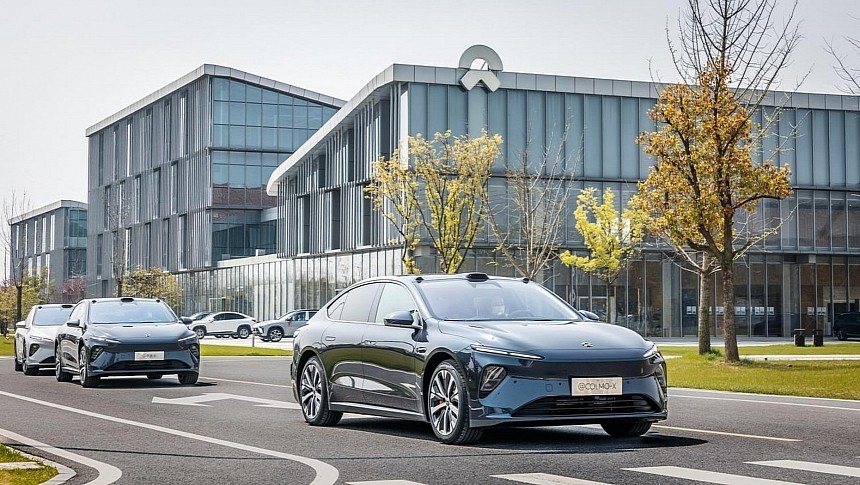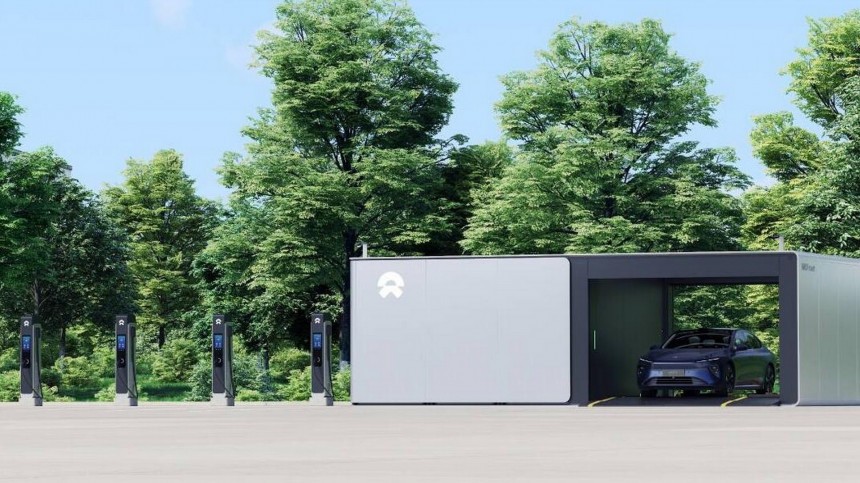Matthias Schmidt recently published that Chinese companies have not managed to obtain more than 3% of the new car market in Europe. In a way, they are still establishing their dealership networks and trying to gain buyers' trust, which takes a while. NIO may have taken the express path to achieve that with a deal with Oslo Taxi, one of Norway's largest taxi cab operators, with more than 13,000 vehicles in its fleet: it has become the first supplier choice for the company.
Starting on November 1, 2024, all taxi cabs in Oslo will have to be emission-free. In other words, plug-in hybrids will not make the cut: they will have to be powered by batteries or fuel cells. For taxi drivers, fast charging will have monetary implications in the short and the long run. Apart from forcing drivers to stop more often and for more time during their work shifts, frequently doing it damages the battery packs, which will shorten their lifespans. Tesla currently charges around $20,000 for a replacement.
The taxi drivers using a NIO will have battery pack swapping available. In other words, they will spend around six minutes to switch a depleted component with a fully charged one. That should increase the productivity of these workers if NIO is able to have enough Power Swap stations spread around the Norwegian capital. I have contacted Oslo Taxi to learn about the specifics of the deal, but the company has yet to answer my questions.
One of them is whether NIO will offer exclusive swapping stations to taxi drivers or if it will just put them everywhere. Any company willing to expand its network should consider extending the benefit to all its customers. At the same time, it has to ensure the taxi cabs will waste the least amount of time in getting more juice to keep running.
Taxi drivers are the best people to promote new brands in any car market. They are the ones who detect before anyone else how expensive it is to service a vehicle, how robust it is, how much fuel or energy it needs, and so forth. Anyone willing to buy a dependable car has to check what these guys are driving. If most of them have a NIO, that will be a good sign for the Chinese automaker. It is also the perfect opportunity to ruin your reputation. Just check what Tesla did with Schiphol taxi drivers. BIOS-Groep sued the American BEV maker by the end of 2020.
If NIO wants to get this right, it has to have enough repair shops around. They also need to quickly put the vehicles back to work should they face any problems. If they run smoothly, there is always the danger they may crash: fixing them in these cases must also take no time. Taxi drivers who are not driving are not managing to pay their bills.
Oslo Taxi must have decided to try the advantages that NIO promises to offer. Besides the possibility of always having a fully-charged battery pack available, the cars can also be bought without these components. Customers who wish to do that must subscribe to Battery as a Service (BaaS), which allows them to use and swap battery packs by paying a monthly fee. Clients who purchase the car and the battery pack cannot use the swapping stations for obvious reasons.
Another edge NIO may offer Oslo Taxi is that its cabs will always have a battery pack that is working perfectly. Should anything go wrong with one, the NIO app will tell the driver to head to a Power Swap station and replace the component. That's what happened with a Chinese customer who hit something on the road and damaged the battery pack. Soon after he left the station, it caught fire, allegedly because the damaged battery pack was put to charge. NIO never clarified what happened. It should also explain if it has any emergency plan for damaged components. Supposing Oslo Taxi buys NIO vehicles and uses BaaS, all it must care about is that its cars are protected.
NIO recently published an interesting post on Facebook talking about nine advantages its battery-swapping system offers. One of them is that swappable components are easier to recycle and reuse because "batteries and vehicles have different lifespans." I have been saying the same for quite a while: BEVs will live much longer than their battery packs, and it makes sense that they do. Without direct emissions of carbon dioxide and pollutant gases, there is no reason for them not to last for decades.
Summing up, NIO seems to have scored a major goal in its attempt to sell vehicles in Europe. If the deal with Oslo Taxi goes well, the Chinese carmaker may have thousands of the best people to promote their products without marketing expenses: word of mouth should take care of giving the company a larger share of the Norwegian market. Similar deals may follow to repeat that in the entire continent.
The taxi drivers using a NIO will have battery pack swapping available. In other words, they will spend around six minutes to switch a depleted component with a fully charged one. That should increase the productivity of these workers if NIO is able to have enough Power Swap stations spread around the Norwegian capital. I have contacted Oslo Taxi to learn about the specifics of the deal, but the company has yet to answer my questions.
One of them is whether NIO will offer exclusive swapping stations to taxi drivers or if it will just put them everywhere. Any company willing to expand its network should consider extending the benefit to all its customers. At the same time, it has to ensure the taxi cabs will waste the least amount of time in getting more juice to keep running.
If NIO wants to get this right, it has to have enough repair shops around. They also need to quickly put the vehicles back to work should they face any problems. If they run smoothly, there is always the danger they may crash: fixing them in these cases must also take no time. Taxi drivers who are not driving are not managing to pay their bills.
Oslo Taxi must have decided to try the advantages that NIO promises to offer. Besides the possibility of always having a fully-charged battery pack available, the cars can also be bought without these components. Customers who wish to do that must subscribe to Battery as a Service (BaaS), which allows them to use and swap battery packs by paying a monthly fee. Clients who purchase the car and the battery pack cannot use the swapping stations for obvious reasons.
NIO recently published an interesting post on Facebook talking about nine advantages its battery-swapping system offers. One of them is that swappable components are easier to recycle and reuse because "batteries and vehicles have different lifespans." I have been saying the same for quite a while: BEVs will live much longer than their battery packs, and it makes sense that they do. Without direct emissions of carbon dioxide and pollutant gases, there is no reason for them not to last for decades.
Summing up, NIO seems to have scored a major goal in its attempt to sell vehicles in Europe. If the deal with Oslo Taxi goes well, the Chinese carmaker may have thousands of the best people to promote their products without marketing expenses: word of mouth should take care of giving the company a larger share of the Norwegian market. Similar deals may follow to repeat that in the entire continent.


























